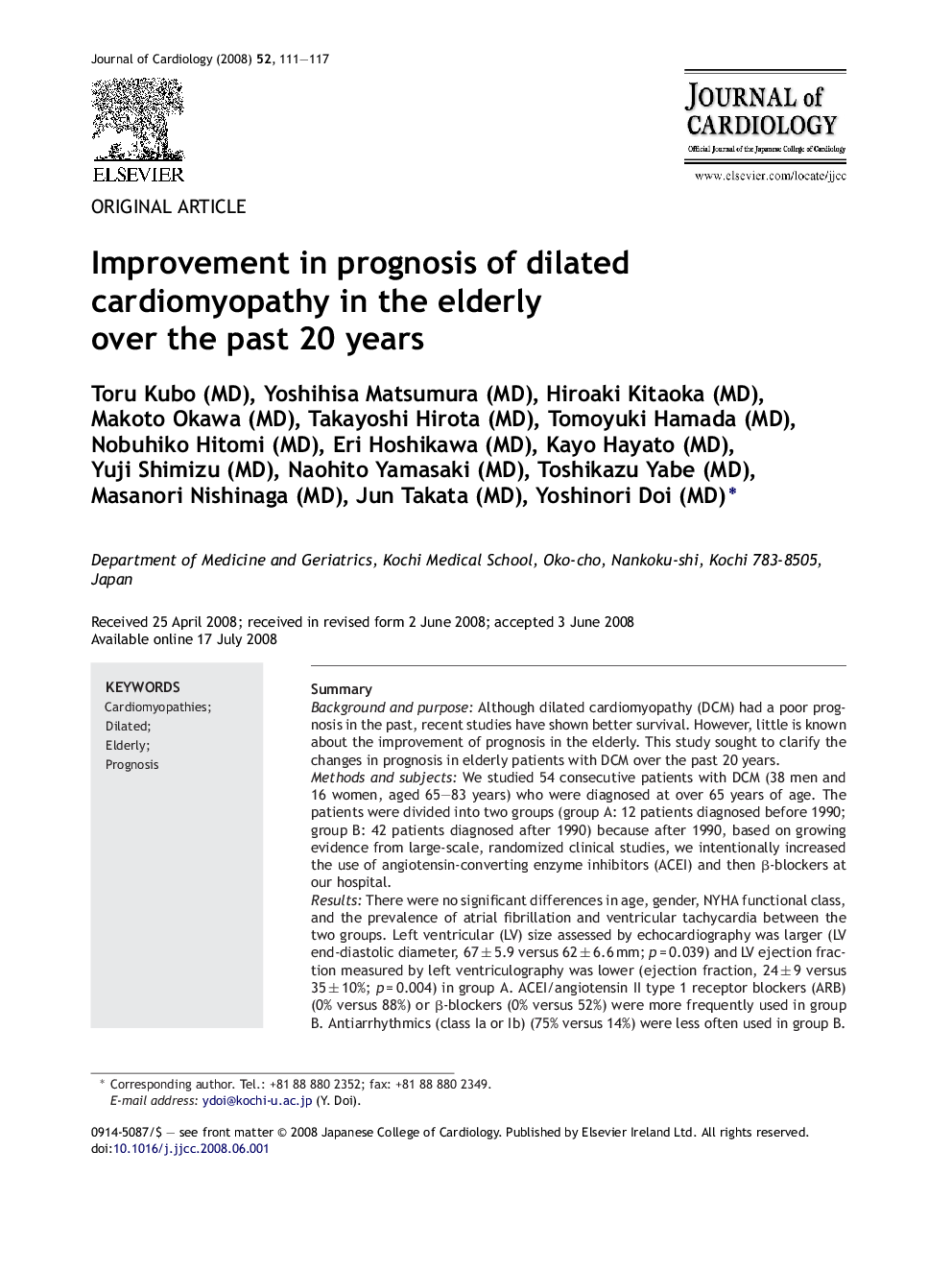| Article ID | Journal | Published Year | Pages | File Type |
|---|---|---|---|---|
| 2963832 | Journal of Cardiology | 2008 | 7 Pages |
SummaryBackground and purposeAlthough dilated cardiomyopathy (DCM) had a poor prognosis in the past, recent studies have shown better survival. However, little is known about the improvement of prognosis in the elderly. This study sought to clarify the changes in prognosis in elderly patients with DCM over the past 20 years.Methods and subjectsWe studied 54 consecutive patients with DCM (38 men and 16 women, aged 65–83 years) who were diagnosed at over 65 years of age. The patients were divided into two groups (group A: 12 patients diagnosed before 1990; group B: 42 patients diagnosed after 1990) because after 1990, based on growing evidence from large-scale, randomized clinical studies, we intentionally increased the use of angiotensin-converting enzyme inhibitors (ACEI) and then β-blockers at our hospital.ResultsThere were no significant differences in age, gender, NYHA functional class, and the prevalence of atrial fibrillation and ventricular tachycardia between the two groups. Left ventricular (LV) size assessed by echocardiography was larger (LV end-diastolic diameter, 67 ± 5.9 versus 62 ± 6.6 mm; p = 0.039) and LV ejection fraction measured by left ventriculography was lower (ejection fraction, 24 ± 9 versus 35 ± 10%; p = 0.004) in group A. ACEI/angiotensin II type 1 receptor blockers (ARB) (0% versus 88%) or β-blockers (0% versus 52%) were more frequently used in group B. Antiarrhythmics (class Ia or Ib) (75% versus 14%) were less often used in group B. The 5- and 10-year event-free survival rates for cardiac death were 75.4% and 22.0% in group A versus 81.2% and 71.3% in group B (log-rank test, p = 0.014).ConclusionsThe prognosis of DCM patients in the elderly has significantly improved over the past 20 years. The advances in the pharmacologic treatment and earlier diagnosis may have contributed to the better survival.
